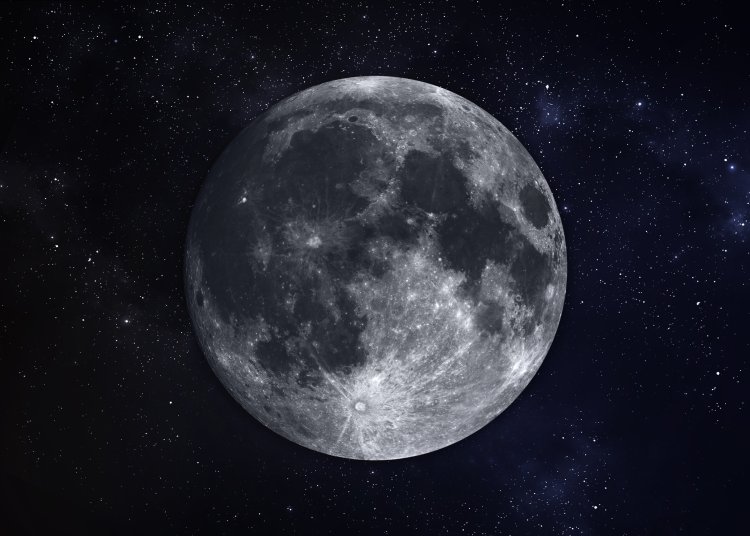The Second World War was a powerful impetus not only for the arms race of the two superpowers – the USSR and the United States – but also for their space race. It was important for both the Soviet Union and the United States to declare that they were the first. They paid special attention to their lunar programs. Even at that time, scientists knew that selenographic studies (studies of the lunar surface) were needed not only to study the Moon itself, but also because the study of its surface, composition, and internal structure provides important material for understanding the evolution of our planet – the Earth.
Source: forplayday / ru.123rf.com
In January 1959, Soviet automatic station Luna 1 was launched to the natural satellite of the Earth. During the Luna 2 mission, the space probe delivered some Soviet Union pennants to the Moon surface. Nikita Khrushchev presented their copy to US President Dwight Eisenhower, which fueled even greater interest in the space race. Subsequent USSR missions made it possible to fly around the moon, after which scientists were able to map the entire Moon, including its reverse side. And one of the most significant Soviet Union’s achievements in the lunar program: on September 24, 1970, Luna 16 delivered lunar soil to Earth for the first time in the world.
To commemorate the anniversary in 2020, Roscosmos published a number of documents signed, among others, by Chairman of the Interdepartmental Scientific and Technical Council for Space Research, Academician M. V. Keldysh, on the Luna 16 mission, which had been kept secret for several decades.
Luna 16 was created by the project group of S. A. Lavochkin NPO under the leadership of Georgy Nikolaevich Babakin. The probe consisted of a landing stage with a ground-lifting device, a Moon-Earth rocket, a ball-shaped return vehicle with three compartments, including one for the parachute, and a container for collected lunar soil. On September 12, 1970, Luna 16 was launched on a Proton-K/D rocket with a pennant with the state name, the coat of arms, the program title, and the date. On September 20, the station made a soft landing on the territory of Mare Fecunditatis. The station drilled into the Moon surface by 35 cm, after which the device put the obtained samples weighing 101 g in a special container. On September 24, the lunar soil has already reached the Earth for further research.
In the published express report of 1970, it was indicated that the resulting substance is heterogeneous in size and composition of particles, many large particles have a lentil shape and a grayish-brown color. Later it was revealed that the loose lunar soil – regolith – is a powder that easily sticks together into separate loose lumps, like wet sand. The regolith granularity increases with depth. “According to the chemical composition, the substance of the lunar soil was a crushed rock of the basalt type,” Roscosmos clarifies, referring to a study conducted by the V. I. Vernadsky Institute of Geochemistry and Analytical Chemistry of the USSR Academy of Sciences (GEOKHI).
As indicated by the Russian State Archive of Scientific-Technical Documentation, the tasks of Luna 16 were fully completed. The practical possibility of achieving the second space speed, which is necessary for flights to the Earth’s natural satellite, was proved, three types of flight paths were tested, the fundamental tasks for automatic flight control of an automatic station were solved, landing from a selenocentric orbit was carried out, which increased the landing accuracy.
In addition, the Luna 16 mission allowed the Soviet Union to gain the primacy that was so important in the space race. The World Air Sports Federation registered the following world records: the world record of the maximum mass delivered to the lunar surface in class C; the world record of the maximum mass returned to Earth from the lunar surface in class C; the world record of the maximum mass of lunar rocks delivered to Earth by an automatic station in class C.
Sources:
A memorable date. 1970 – Luna 16 space probe. The first delivery of soil from the Moon by an automatic station. Roscosmos. https://www.roscosmos.ru/22668/
The Moon in the palm of your hand. Roscosmos https://www.roscosmos.ru/29219/
The first lunar soil. Russian State Archive of Scientific-Technical Documentation. https://rgantd.ru/news/pamyatnye-daty/pervyy-lunnyy-grunt/
The space race. Kultura.RF. https://www.culture.ru/materials/50445/kosmicheskaya-gonka
Photo on the homepage: forplayday / ru.123rf.com






















